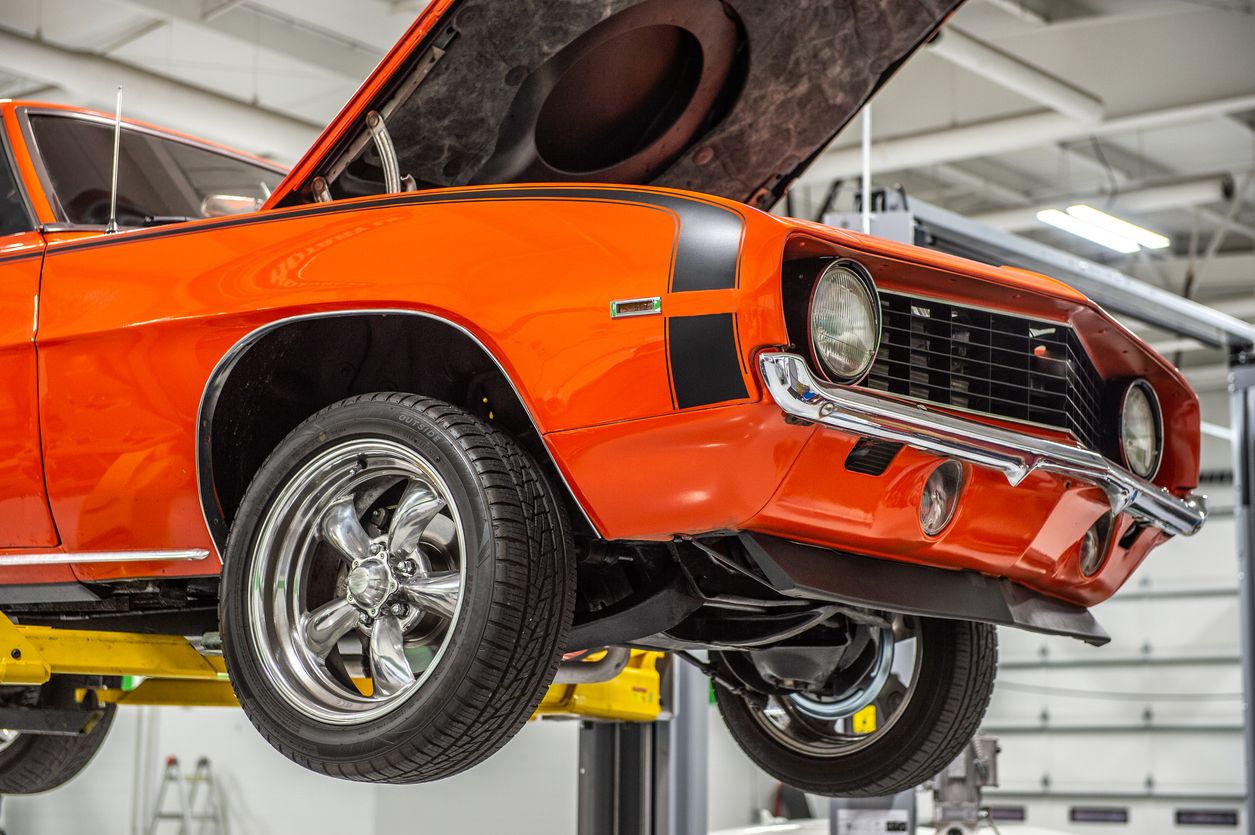Now Reading: Your Ultimate Guide to Becoming a Car Guru
-
01
Your Ultimate Guide to Becoming a Car Guru
Your Ultimate Guide to Becoming a Car Guru

Finding the right car can feel overwhelming. With so many makes, models, and features, where do you even begin? Whether you’re buying your first car, upgrading your current ride, or just love everything about automobiles, becoming a car guru can make the process easier and more enjoyable. A car guru isn’t just someone who knows a lot about cars; it’s someone who understands how to find value, spot potential issues, and navigate the complex world of buying and selling vehicles. This guide will walk you through the essential steps to build your knowledge, from understanding the basics to mastering the art of negotiation. You’ll gain the confidence to make smart decisions and help others do the same.
Key Takeaways
- Become a Knowledgeable Buyer: A true car guru researches extensively before making a purchase. This includes understanding different car types, reliability ratings, and ownership costs.
- Master the Inspection: Learning how to perform a basic vehicle inspection can save you from costly repairs down the road. Key areas include the engine, tires, body, and interior.
- Understand Fair Market Value: Knowing how to determine a car’s worth is crucial for both buying and selling. Tools like Kelley Blue Book (KBB) and Edmunds are invaluable resources.
- Negotiate with Confidence: Negotiation is a key skill. Being prepared, polite, and firm will help you secure the best possible deal.
- Embrace Continuous Learning: The automotive world is always changing. Staying updated on new technologies and market trends is what separates a casual enthusiast from a genuine car guru.
What Does It Mean to Be a Car Guru?
Being a car guru goes beyond simply loving cars. It’s about having a deep and practical understanding of the automotive world. This person can look at a used car and see more than just a shiny exterior; they can assess its mechanical health, estimate its true value, and predict potential future expenses. A car guru is the friend everyone calls for advice before heading to a dealership. They understand the nuances of different brands, the pros and cons of various engine types, and the fine print in a vehicle history report. They combine passion with knowledge, turning a potentially stressful experience like car buying into a strategic and successful endeavor. For them, every car tells a story, and they know how to read it.
The Mindset of an Automotive Expert
The first step on your journey to becoming a car guru is adopting the right mindset. It’s about curiosity and a desire to learn. Instead of being intimidated by complex mechanics, an expert sees an opportunity to understand how things work. This means asking questions, reading articles, and watching videos about everything from engine maintenance to the latest in-car technology. A guru is also a skeptic in the best way possible; they don’t take a seller’s claims at face value. They verify information, check for inconsistencies, and trust their research. This analytical approach, balanced with a genuine passion for automobiles, forms the foundation of true expertise.
Starting Your Journey: Research and Resources
Every car guru starts with a solid foundation of knowledge. The internet is your best friend here, but it’s important to use reliable sources. Websites like Consumer Reports, Edmunds, and Kelley Blue Book (KBB) provide professional reviews, long-term reliability data, and pricing information. Forums such as Reddit’s r/whatcarshouldIbuy offer real-world owner experiences and advice from a community of enthusiasts. YouTube channels dedicated to car reviews and repairs can also be incredibly helpful, as they provide visual demonstrations that are easy to follow. Spend time learning about different vehicle types—sedans, SUVs, trucks, and hybrids—and their typical uses. Understand what makes a brand like Toyota known for reliability, while a brand like BMW is known for performance. This initial research phase is crucial for building the confidence you need.
Essential Online Tools for Every Car Guru
To elevate your status to a true car guru, you need the right tools in your digital toolbox. These resources help you verify information and make data-driven decisions.
- Vehicle History Reports: Services like CarFax and AutoCheck are non-negotiable. For a small fee, they provide a vehicle’s complete history, including accident records, service logs, title issues (like salvage or flood damage), and odometer readings.
- Pricing Guides: KBB and NADAguides offer detailed pricing information based on a car’s condition, mileage, and optional features. Use these to understand the fair market value before you start negotiating.
- Recall Information: The National Highway Traffic Safety Administration (NHTSA) website allows you to check for any open safety recalls on a vehicle using its Vehicle Identification Number (VIN). This is a critical safety check that many buyers overlook.
The Art of the Vehicle Inspection
You don’t need to be a certified mechanic to perform a thorough vehicle inspection. A smart car guru knows what to look for to spot red flags. Start with the exterior. Walk around the car and look for mismatched paint, which could indicate a past repair. Check for rust, especially on the undercarriage and around the wheel wells. Examine the tires—uneven wear can signal alignment problems. Inside, test every button, switch, and feature. Turn on the air conditioning and heater. Check for any strange smells, like mildew or burning oil. A systematic inspection can reveal a lot about how the car was maintained.
H3: Under the Hood: A Non-Mechanic’s Checklist
Popping the hood can be intimidating, but a few simple checks can tell you a lot. Don’t worry, you don’t need any tools for this basic inspection.
- Check the Fluids: Look at the engine oil dipstick. The oil should be a light-brown color; if it’s black and gritty or milky, it could indicate serious engine problems. Check the transmission fluid (on some cars) and the brake fluid levels.
- Inspect Belts and Hoses: Look for visible cracks, fraying, or signs of aging on the rubber belts and hoses. These are relatively cheap to replace but can cause major issues if they fail.
- Look for Leaks: Scan the engine bay for any signs of fluid leaks. Puddles under the car are a major red flag.
- Battery Check: Examine the car battery terminals. Any fuzzy, blue-green corrosion needs to be cleaned and could suggest a weak battery.
H3: The Importance of a Test Drive
A test drive is your single best opportunity to evaluate a car’s performance. A smart car guru uses this time wisely. Don’t just drive around the block. Take the car on a route that includes city streets, tight corners, and a highway. During the drive, turn the radio off and listen carefully. Do you hear any clunking, grinding, or whining noises? Does the car pull to one side? Test the brakes in a safe, open area to see how they respond. Does the transmission shift smoothly, or is it jerky? Pay attention to how the car feels. A thorough test drive can uncover issues that aren’t visible during a static inspection.
Understanding a Car’s Value
Knowing what a car is worth is the ultimate power move for any car guru. A car’s price is influenced by many factors: its age, mileage, condition, features, and even its color. The first step is to use online valuation tools like KBB. Be honest when you input the car’s details. A car in “fair” condition is worth significantly less than one in “excellent” condition. Beyond online tools, browse local listings on sites like Facebook Marketplace, Craigslist, and Autotrader to see what similar cars are actually selling for in your area. This gives you real-world market data. Remember that a dealership’s asking price is almost always higher than a private seller’s, as they have overhead costs to cover.
Comparing Private Party vs. Dealership Pricing
When assessing value, it’s important to understand the difference between buying from a private seller and a dealership. Each has its pros and cons that a car guru must weigh.
|
Feature |
Private Party Seller |
Dealership |
|---|---|---|
|
Price |
Generally lower |
Higher due to overhead and profit |
|
Negotiation |
More flexibility |
Often rigid, but possible |
|
Trade-Ins |
Not an option |
Conveniently accepted |
|
Warranty |
“As-is,” no warranty |
May offer certified pre-owned (CPO) warranties |
|
Paperwork |
You handle title transfer and registration |
They handle all paperwork for you |
A savvy buyer knows that while a private party sale can offer a better price, a dealership provides convenience and a potential safety net with a CPO program.
Mastering Negotiation Like a Pro
Negotiation is where a car guru can save thousands of dollars. The key is preparation. Before you ever make an offer, you should know the car’s fair market value, be aware of any issues you found during your inspection, and have a firm budget in mind. When you start the conversation, be polite and reasonable. Don’t start with an insultingly low offer. Instead, present a fair offer based on your research and be prepared to explain your reasoning. For example, you could say, “I see the car is listed for $15,000. Based on my research for this model with this mileage, and considering the tires will need to be replaced soon, I can offer $13,800.” This shows you’ve done your homework.
Key Phrases for Successful Negotiation
- “What is your flexibility on the price?”
- “My research shows that similar cars in the area are selling for closer to [Your Price].”
- “Is the price negotiable?”
- “Based on the needed repairs for [Issue], I would need the price to be closer to [Lower Price].”
The Final Steps: Closing the Deal
Once you’ve agreed on a price, the work isn’t quite done. A meticulous car guru ensures the final steps are handled correctly to avoid future headaches. The most important step is to arrange for a pre-purchase inspection (PPI) with a trusted, independent mechanic. This is a final, expert check-up that can uncover hidden problems you may have missed. A PPI typically costs between $100 and $200, but it can save you from buying a car with thousands of dollars in hidden issues. It’s the best insurance policy you can buy when purchasing a used vehicle. Never skip this step, no matter how honest the seller seems.
Handling Paperwork and Payment
With a clean PPI report, you’re ready to finalize the sale. Ensure the seller has the vehicle’s title and that their name is on it. The VIN on the title must match the VIN on the car. Carefully review the title for any brands like “salvage,” “rebuilt,” or “flood.” When it comes to payment, avoid using cash for large transactions. A cashier’s check is one of the safest methods for both parties. Make sure you get a bill of sale, which is a receipt that documents the transaction details, including the sale price, date, and vehicle information. With the keys and signed-over title in hand, you are now the proud owner of your new car.
Staying Current in the Automotive World
The automotive industry evolves rapidly. Today’s cutting-edge technology will be standard in a few years. A true car guru never stops learning. To stay informed, follow major automotive news outlets and publications. For example, resources like those found on https://forbesplanet.co.uk/ can offer insights into broader market trends and financial considerations related to car ownership. Subscribe to YouTube channels that focus on new car releases and technological advancements, such as electric vehicles (EVs) and autonomous driving features. Understanding these trends not only keeps your knowledge fresh but also helps you anticipate where the market is heading, making you an even smarter buyer and owner in the long run.
Conclusion
Becoming a car guru is a journey of continuous learning, not a destination. By arming yourself with knowledge, mastering the art of inspection, and honing your negotiation skills, you can transform the daunting task of buying a car into a confident and rewarding experience. It all starts with research and a willingness to look beyond the surface. Use the tools available to you, trust your instincts, and never be afraid to walk away from a bad deal. The confidence you build will not only save you money but will also make you the go-to expert among your friends and family.
FAQ
Q1: How long does it take to become a car guru?
A1: There’s no set timeline. Becoming a car guru is about building a strong knowledge base and gaining practical experience. You can become highly competent in a few months of dedicated research and by actively inspecting cars. True mastery, however, comes from years of passion and continuous learning.
Q2: Do I need to be a mechanic to be a car guru?
A2: Absolutely not. While mechanical knowledge is helpful, being a car guru is more about being a smart consumer. It involves understanding market value, reading vehicle history reports, performing basic inspections, and knowing how to negotiate. You can always rely on a professional mechanic for a pre-purchase inspection.
Q3: What is the single most important step when buying a used car?
A3: The single most important step is the pre-purchase inspection (PPI) by a trusted, independent mechanic. No matter how much research you do or how well the car drives, a PPI is the ultimate safety net that can uncover hidden, costly issues before you buy.
















